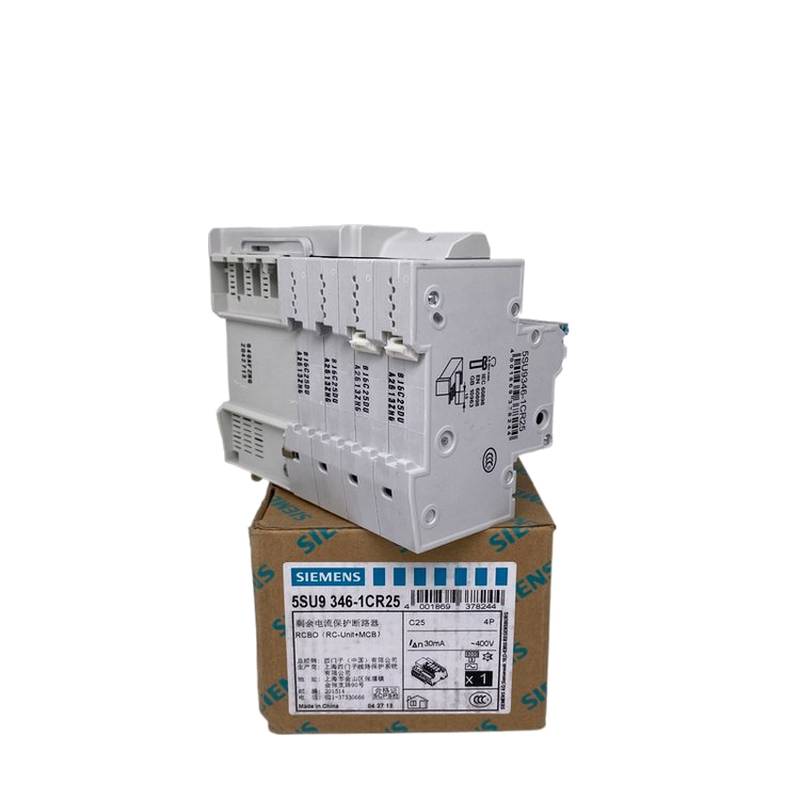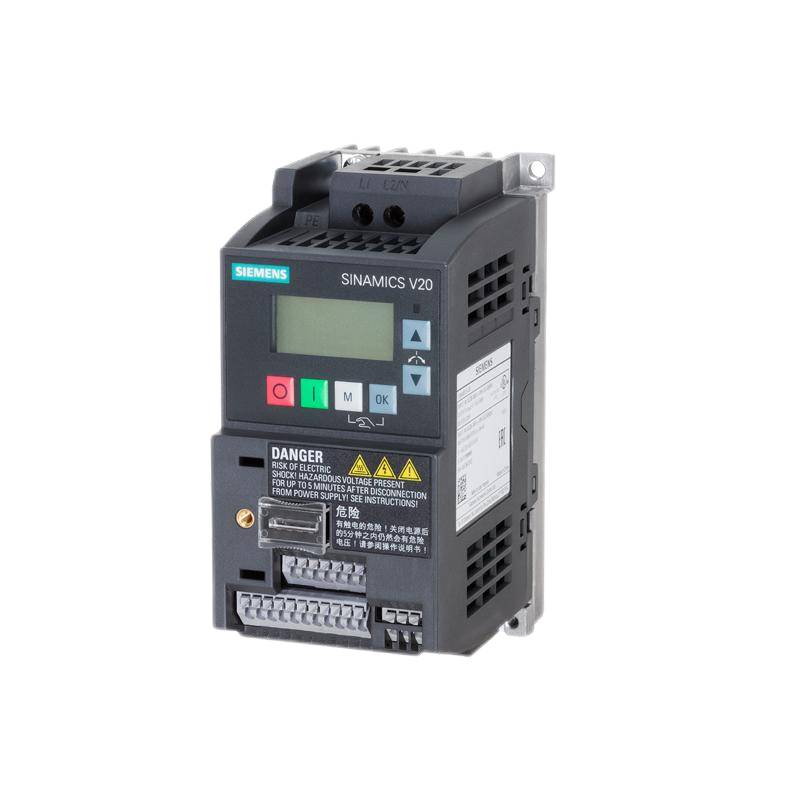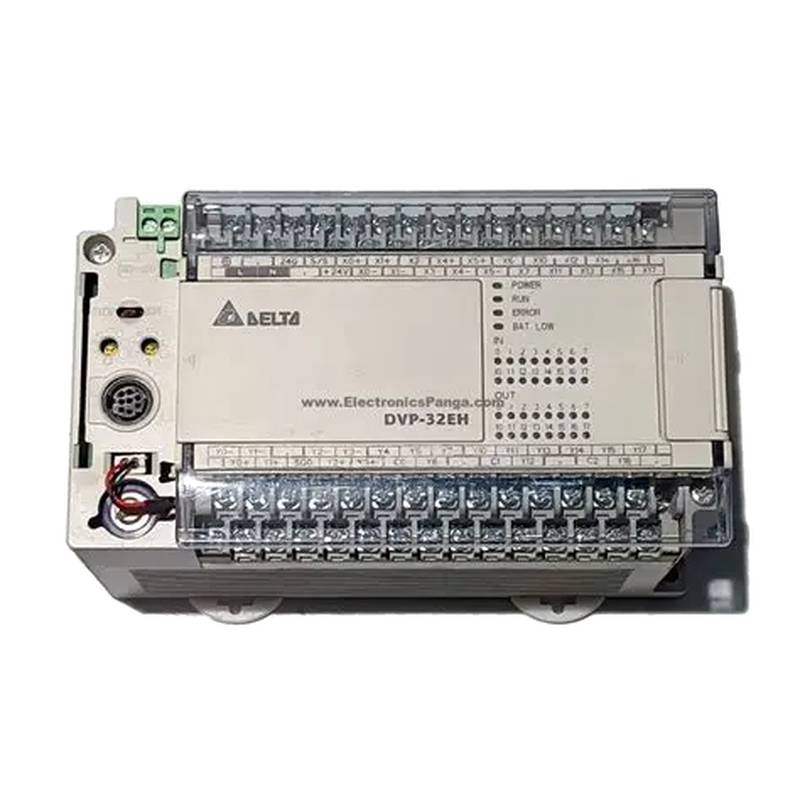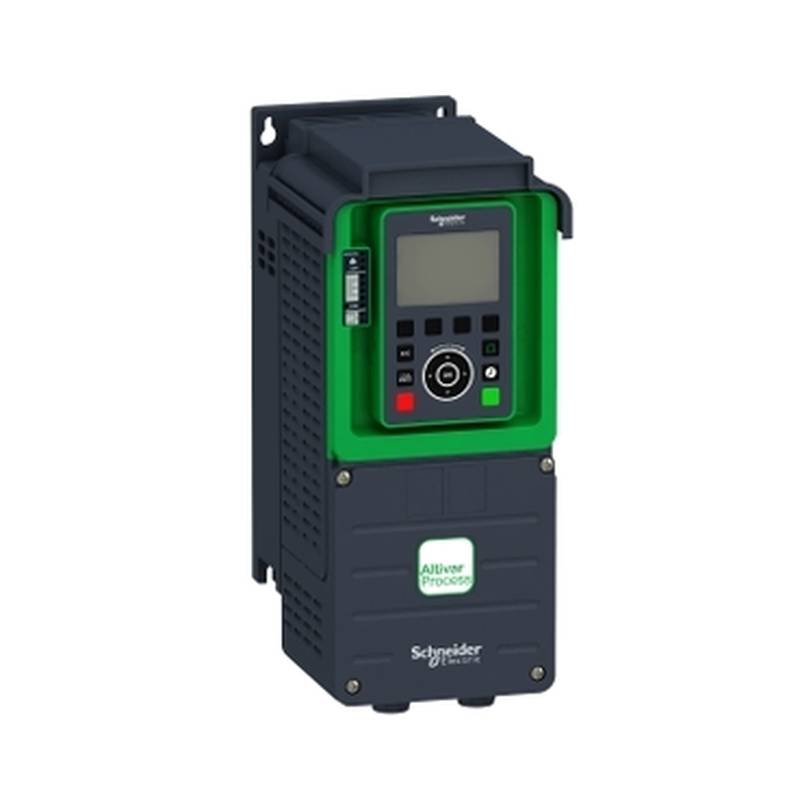
The Siemens 5SU9346-1CN40 is a sophisticated 4-pole Residual Current Circuit Breaker with Overcurrent Protection (RCBO) designed for robust electrical safety in demanding industrial and commercial environments. This unit offers a 40A current rating, 30mA residual current sensitivity, and a Type C tripping characteristic, making it exceptionally well-suited for protecting circuits with moderate inrush currents from both overload and short-circuit faults, as well as dangerous earth leakage currents. Its primary advantages lie in its comprehensive protection capabilities, compact design, and Siemens' renowned reliability. Key technical parameters include its 400/415V AC rated voltage, 10kA breaking capacity, and compliance with IEC/EN 61009-1 standards.
Siemens 5SU9346-1CN40 Product Specifications
| Feature | Specification |
| :----------------------- | :-------------------------------------------------- |
| Product Type | RCBO (Residual Current Circuit Breaker with Overcurrent Protection) |
| Manufacturer | Siemens |
| Model Number | 5SU9346-1CN40 |
| Number of Poles | 4P (4-pole) |
| Rated Current (In) | 40A |
| Residual Current (IΔn) | 30mA |
| Tripping Characteristic | Type C |
| Rated Voltage (Un) | 400/415V AC |
| Breaking Capacity (Icn) | 10kA |
| Frequency | 50/60 Hz |
| Terminal Type | Screw terminals |
| Mounting Type | DIN rail (35mm) |
| Standard | IEC/EN 61009-1 |
| Operating Temperature | -25°C to +45°C |
| Protection Class | IP20 (handle), IP40 (enclosure) |
| Color | Light Gray |
Core Features and Market Positioning
The Siemens 5SU9346-1CN40 distinguishes itself through its integrated protection, combining residual current and overcurrent functions into a single, compact device. This not only saves valuable panel space but also simplifies installation and wiring compared to using separate RCDs and MCBs. The Type C tripping curve is a critical differentiator, providing enhanced immunity to nuisance tripping caused by inductive loads or motor start-ups, which are common in industrial machinery and HVAC systems. This positioning makes it a preferred choice for applications where reliable power delivery is paramount, while still demanding high levels of personnel and equipment protection. Siemens' reputation for quality and longevity further solidifies its market standing as a dependable solution for critical infrastructure.
Key Application Scenarios
This RCBO is ideally suited for protecting circuits in a wide array of industrial settings, including manufacturing plants, processing facilities, and control cabinets where machinery with moderate inrush currents is present. It is a robust solution for safeguarding personnel against electric shock in environments with a higher risk of earth faults, such as those found in workshops and areas with variable humidity. Additionally, it provides essential overload and short-circuit protection for distribution boards feeding lighting systems, motor loads, and general power circuits within commercial buildings and laboratories. Its four-pole configuration ensures complete isolation of all phases and the neutral conductor, a requirement for many three-phase industrial loads and specific safety regulations.
Practical System Integration Guidance
Integrating the Siemens 5SU9346-1CN40 into existing or new electrical systems is straightforward due to its standard DIN rail mounting and clearly marked terminals. For installation, ensure the main power supply is de-energized. Connect the incoming phase conductors (L1, L2, L3) and neutral (N) to the designated upper terminals, typically marked with input arrows. The outgoing load conductors should be connected to the lower terminals. Crucially, the neutral terminal must be connected if the device is used for single-phase applications or if required by local codes for three-phase systems. For three-phase circuits, ensure all four poles are utilized, connecting L1, L2, L3, and N to their respective outgoing terminals to protect the load. Proper grounding of the system is, of course, a prerequisite for effective residual current protection.
Operation and Risk Mitigation
The 5SU9346-1CN40 operates by continuously monitoring the balance of current flowing through the phase and neutral conductors. If an imbalance exceeding 30mA is detected, indicating current leakage to earth, the RCBO rapidly trips, interrupting the circuit and preventing electric shock hazards. The Type C characteristic allows for inrush currents up to 5-10 times the rated current for a short duration, minimizing false trips from motor start-ups. To mitigate risks, always ensure the RCBO is correctly rated for the connected load and that the wiring is secure and properly insulated. Regular testing of the residual current function using the integrated test button (usually marked 'T') is highly recommended, typically monthly, to verify its operational readiness. This simple test confirms the internal tripping mechanism and relay are functioning as intended.
Scalability and Long-Term Value
Siemens' commitment to modularity and standardization in its industrial electrical components ensures that the 5SU9346-1CN40 offers significant long-term value and scalability. It seamlessly integrates with other Siemens circuit protection devices, such as miniature circuit breakers (MCBs) and surge protective devices (SPDs), within standard distribution boards. This allows for easy expansion or modification of electrical protection schemes as facility requirements evolve. Furthermore, its compatibility with broader Siemens industrial automation platforms means it can be part of a networked electrical system, potentially feeding status information back for monitoring and diagnostics in advanced IIoT (Industrial Internet of Things) applications, enhancing predictive maintenance and operational efficiency.
Frequently Asked Questions (FAQs)
What is the primary function of a Siemens 5SU9346-1CN40 RCBO?
This device provides combined overcurrent and residual current protection. It safeguards against overload, short circuits, and dangerous earth leakage currents. Its 4-pole design is essential for three-phase applications.
The Siemens 5SU9346-1CN40 is crucial for personnel safety. It prevents electric shock by detecting small current imbalances. It also protects equipment from damage due to electrical faults.
The RCBO ensures reliable operation of machinery. Its Type C curve handles moderate inrush currents without nuisance tripping. This makes it ideal for inductive loads common in industry.
Can the Siemens 5SU9346-1CN40 be used for single-phase circuits?
Yes, it can be adapted for single-phase applications. For such use, typically only two poles (one phase and neutral) are actively utilized. Ensure proper wiring configuration according to the manual.
It's important to correctly wire the phase and neutral to the appropriate terminals. Even in single-phase use, the 4-pole design offers flexibility for future three-phase needs.
Always consult installation diagrams for single-phase hookups. This ensures correct operation and adherence to electrical safety standards for the specific circuit.
What does the "C" in 5SU9346-1CN40 signify?
The "C" denotes the tripping characteristic of the overcurrent protection. Type C breakers are designed to tolerate higher inrush currents than Type B or A breakers. This is common for inductive loads.
Type C RCBOs are suitable for circuits feeding motors, transformers, or lighting ballasts. They provide a delay before tripping for inrush currents up to 5-10 times the rated current.
This characteristic is vital for industrial environments where motor start-ups are frequent. It prevents unnecessary shutdowns while still offering robust protection against sustained overloads.
How do I test the residual current function of the 5SU9346-1CN40?
Locate the test button on the front of the RCBO, usually labeled "T". With the circuit energized, press this button. The RCBO should trip, disconnecting power.
This test simulates a fault condition, ensuring the residual current sensing mechanism is operational. It's a critical safety check that should be performed regularly.
If the RCBO does not trip when the test button is pressed, it indicates a malfunction. In such cases, the device must be replaced immediately by a qualified electrician.
What is the breaking capacity of the Siemens 5SU9346-1CN40?
The breaking capacity is 10kA (kiloamperes). This is the maximum fault current the RCBO can safely interrupt without sustaining damage. This rating is crucial for system design.
A 10kA rating is sufficient for most residential and commercial distribution circuits. It ensures the device can handle potential short-circuit faults safely.
Ensure the upstream protective device's breaking capacity is compatible. The system's overall fault current level must not exceed the capacity of the lowest-rated protective device.
What standards does this RCBO comply with?
The Siemens 5SU9346-1CN40 complies with IEC/EN 61009-1 standards. These international standards define the requirements for RCBOs. Compliance ensures product safety and performance.
Adherence to these standards means the device has undergone rigorous testing. It meets specific criteria for electrical safety, mechanical robustness, and performance under fault conditions.
Using products that comply with IEC/EN 61009-1 ensures system integrity. It also aids in meeting regulatory requirements for electrical installations globally.
What is the rated current (In) and residual current (IΔn) of this unit?
The rated current (In) for this RCBO is 40A. This is the maximum continuous current it can safely carry under normal operating conditions. The residual current (IΔn) is 30mA.
The 30mA sensitivity is considered safe for protecting against electric shock for personnel. It is the threshold at which the device will trip to interrupt the circuit.
Selecting the correct In and IΔn is vital for effective protection. A 40A rating is suitable for loads drawing up to this limit, while 30mA provides crucial safety against earth faults.
Is this a 3-pole or 4-pole RCBO?
The model number 5SU9346-1CN40 clearly indicates it is a 4-pole (4P) RCBO. This means it has separate poles for all three phases (L1, L2, L3) and the neutral (N).
Four-pole devices are essential for protecting three-phase circuits where neutral disconnection is required by code or for equipment isolation. It provides complete isolation of the circuit.
Using a 4-pole RCBO ensures all conductors are interrupted during a fault. This is a critical safety feature for many industrial three-phase systems and applications.
What is the operating temperature range for the 5SU9346-1CN40?
This RCBO is designed to operate reliably within an ambient temperature range of -25°C to +45°C. This wide range makes it suitable for various industrial environments.
Operating outside this specified range can affect the performance and lifespan of the device. Ensure adequate ventilation in enclosures to maintain optimal operating temperatures.
Extreme temperatures can impact tripping characteristics. Always consider the environmental conditions of the installation site when selecting electrical protection devices.
Can this RCBO be integrated with smart home or industrial IoT systems?
While the 5SU9346-1CN40 is a traditional RCBO, Siemens offers advanced versions and gateway solutions. These can enable integration with industrial control systems and IIoT platforms.
Integration might involve ancillary modules or data acquisition devices. These allow for remote monitoring of status and trip events in smart electrical networks.
Siemens' broader ecosystem supports digital transformation. This allows for data-driven maintenance and enhanced operational visibility in connected facilities.
























